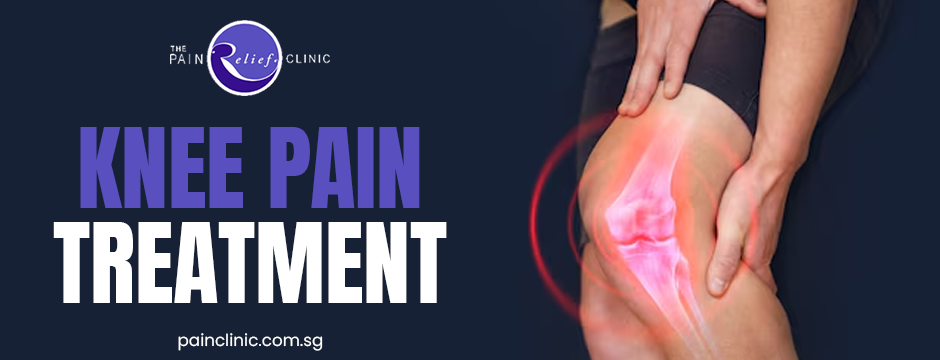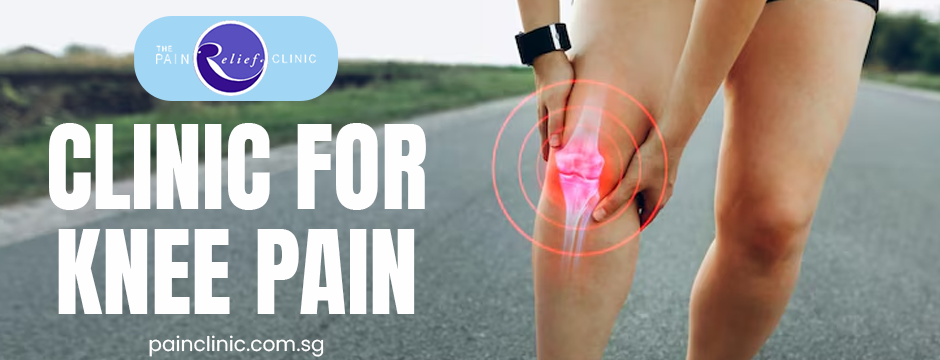Why Diagnosing the Root Cause Is Crucial for Effective Knee Pain Treatment
Knee pain is a common yet often misunderstood issue. Whether caused by injury, arthritis, or overuse, knee discomfort can drastically reduce quality of life. From professional athletes to office workers, almost everyone has, at some point, felt the effects of knee pain. While over-the-counter remedies and rest might provide temporary relief, they rarely offer a long-term solution. For any knee pain treatment to be truly effective, it must begin with identifying the root cause. Without understanding what’s actually triggering the pain, treatment efforts can become repetitive, ineffective, or even harmful. Let’s explore why accurate diagnosis is the foundation of lasting knee recovery.
The Complex Mechanics Behind Knee Pain
One of the body’s most complicated and largest joints is the knee. It consists of bones, cartilage, ligaments, tendons, and fluid-filled sacs called bursae. These components must work in harmony to allow basic movements like walking, sitting, climbing stairs, or even just standing still.
Because of this complexity, knee pain can stem from a variety of issues. It might be a result of torn ligaments, meniscus damage, cartilage wear, arthritis, or inflammation in surrounding tissues. It could also originate from poor posture, muscle imbalance, or referred pain from the hips or lower back.
When people skip diagnosis and jump straight to self-treatment or generic exercises, they run the risk of worsening the condition. That’s why tailored knee pain treatment must be based on a deep understanding of the joint and its function.
Why Imaging Matters
To accurately diagnose knee pain, clinical evaluation alone is not enough. Visual inspection and physical movement tests can indicate the location of pain, but often don’t reveal the full story. Diagnostic imaging is essential in this situation.
Technologies like X-rays, MRIs, and ultrasound scans help doctors look beneath the surface. X-rays reveal bone alignment and joint space, helpful for spotting arthritis or fractures. MRIs provide detailed views of soft tissue damage, such as ligament tears or cartilage wear. Ultrasound can capture inflammation or fluid buildup in real time.
Armed with these insights, your healthcare provider can create a focused, effective knee pain treatment plan, rather than relying on guesswork.
One Size Does Not Fit All
There’s a reason some people feel relief from simple stretching, while others need injections or surgery. Knee pain is not a one-size-fits-all condition. Unfortunately, many patients are given the same set of instructions: ice, rest, and take some anti-inflammatories. While these tips might offer short-term comfort, they rarely address long-term damage or underlying dysfunction.
The right knee pain treatment must be built around the unique structure, lifestyle, and goals of each individual. Someone who runs marathons will require a different approach than someone with age-related joint degeneration.
Personalized treatment plans can include physical therapy, bracing, medication, orthotic support, or regenerative injections. But none of these should be applied without a clear diagnosis. Customized care not only improves outcomes—it also reduces frustration and saves time and money in the long run.
Moving Away from Generic Solutions
One of the biggest issues in chronic knee pain is the overuse of generic solutions. Painkillers mask the discomfort but do nothing to repair the damage. Generic knee braces offer stability but may not address the reason for joint instability in the first place.
With a diagnosis-led approach, patients receive knee pain treatment that corrects the actual issue. For example, if a patient is diagnosed with patellofemoral syndrome due to weak hip abductors, simply taking anti-inflammatories won’t solve the problem. A targeted rehab program to strengthen the hips will.
This precision approach not only shortens recovery time but also prevents further deterioration.
Early Intervention Matters
Waiting until the pain becomes unbearable is a mistake many people make. At that point, damage may be more severe, and recovery might take longer.
Knee pain often begins with subtle symptoms—occasional discomfort when climbing stairs, stiffness after sitting, or a slight limp. These early signs should not be ignored. Prompt diagnosis and knee pain treatment at this stage can often prevent the need for surgery or more invasive procedures.
Many people who sought care early were able to resolve their pain through targeted physical therapy, ergonomic adjustments, and simple lifestyle changes.
Non-Invasive Treatments That Work
Fortunately, not every solution requires surgery. In fact, many knee issues can be resolved with non-invasive methods, provided they are based on an accurate diagnosis.
Treatments such as physiotherapy, therapeutic ultrasound, laser therapy, or guided stretching programs can drastically improve knee function. Platelet-Rich Plasma (PRP) and hyaluronic acid injections have also become popular alternatives to surgery, offering pain relief and joint lubrication.
For those with inflammatory issues, dietary changes and nutritional support can reduce swelling and discomfort. The key is that these solutions are matched to the specific issue—not randomly selected from a general menu.
A diagnosis-led knee pain treatment not only improves recovery but also boosts confidence in your health choices.
Lifestyle Adjustments for Long-Term Success
Knee health isn’t just about treatment—it’s also about maintaining progress. Once the immediate pain subsides, lifestyle habits need to support recovery. This might include weight management, adopting joint-friendly workouts, improving posture, and using supportive footwear.
Without these adjustments, it’s easy for the problem to return. Incorporating low-impact exercises like swimming, yoga, or cycling can build strength and flexibility while protecting the knees from future strain.
Emotional and Psychological Aspects of Knee Pain
Chronic pain can have a negative impact on one’s mental health. People with ongoing knee issues often report frustration, anxiety, and a feeling of helplessness. The inability to move freely impacts work, relationships, and self-esteem.
This emotional burden makes effective knee pain treatment even more important. When patients understand their diagnosis and see real progress, it boosts morale and encourages long-term adherence to rehab plans.
A good provider doesn’t just treat the joint—they support the whole person.
The Importance of Post-Treatment Rehabilitation
Successful knee pain treatment doesn’t end once the pain subsides. Proper rehabilitation ensures the injury doesn’t return and that full functionality is restored.
A structured post-treatment rehab plan might include:
- Strength training to rebuild joint support
- Balance and coordination exercises to prevent re-injury
- Hydrotherapy for gentle movement and flexibility
- Gradual reintroduction to sports or physical activity
Neglecting rehab often leads to repeated injuries or compensatory issues in other joints like the hips or ankles. Think of rehab as your final investment in long-term knee health.
Preventing Recurrence
Once your knee feels better, it’s tempting to go back to your old routines. But prevention is just as important as recovery. Continuing your exercise program, avoiding high-impact activities without proper warm-up, and checking in periodically with your healthcare provider can all help prevent future flare-ups.
Think of prevention as the final—and ongoing—phase of your treatment.
Why The Pain Relief Clinic Is Your Trusted Partner in Knee Pain Recovery
At The Pain Relief Clinic, we go beyond temporary fixes by addressing the root cause of your knee pain through fast, advanced imaging like X-rays or MRIs within one working day. Our customized, non-invasive treatment plans are designed to restore mobility and comfort, without exhausting routines or guesswork. Medisave-accredited and insurance-friendly, we offer expert care that’s practical, affordable, and patient-focused. Begin your journey to lasting relief today.
Final Thoughts
Knee pain might be common, but that doesn’t mean it should be taken lightly. Treating it effectively means digging deeper to understand what’s really causing it. A precise diagnosis paves the way for personalized, non-invasive, and long-lasting knee pain treatment.
It’s time to move beyond temporary relief. With the right approach, you can regain not only your mobility but also your confidence and independence. So the next time knee pain strikes, remember: don’t just treat the symptom—treat the cause. Are you still looking for the best clinic for knee pain in Singapore? Visit The Pain Relief Clinic now!
FAQs
Q1: Why is identifying the root cause of my knee pain so important?
A: Without understanding the root cause—whether it’s ligament damage, arthritis, or inflammation—your treatment may only offer temporary relief. At The Pain Relief Clinic, we use advanced imaging like X-rays and MRIs to design effective, long-lasting knee pain treatment plans.
Q2: I’ve already tried painkillers and rest. Why hasn’t my knee pain improved?
A: Painkillers only mask symptoms without fixing the underlying problem. Our customized knee pain treatment targets the actual cause, not just the discomfort—delivering real, sustainable results.
Q3: Do I need surgery if I have chronic knee pain?
A: Not necessarily. Many conditions improve with non-invasive treatments like physiotherapy, PRP injections, or ultrasound therapy. Accurate diagnosis is key to selecting the best approach for your condition.


